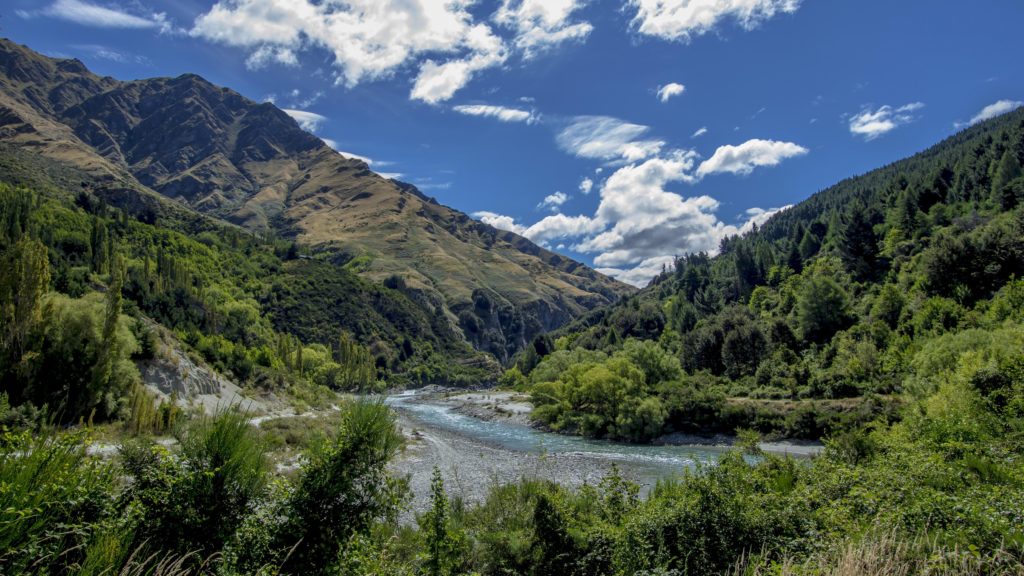

The Shotover River
A recent consultation document proposes a raft of measures to improve the management of New Zealand’s rivers, lakes, aquifers and wetlands.
The 23 initiatives include:
- national regulations to get stock out of waterways
- strengthening the national requirement on councils to set limits
- water permit conditions on efficient use of water and minimising nutrient loss
- improved iwi involvement in council development of water plans and water conservation orders
- an additional $100 million clean-up fund for lakes, rivers, and wetlands.
“New Zealand has an abundance of freshwater but changes are needed to better manage water quality and improve efficiency of use,” Environment Minister Dr Nick Smith and Primary Industries Minister Nathan Guy say.
National regulations are needed to prevent stock getting access to waterways, Dr Smith says. “The problem with each regional council making their own rules is that most have not done so, and for those that do enforcement is cumbersome and expensive,” the minister believes. “It is also confusing to have each council having different stock types, different definitions of a river and different requirements of when fences are required.”
The proposed regulations set a clear timetable starting with all dairy and pig farms by July 2017 and progressively including dairy support, beef and deer farms relative to steepness of country by 2030, and are to be backed up by a new instant fine regime. “Farmers have made great progress in fencing nearly 24,000 kilometres of waterways, but it is now time for regulation to bring the stragglers in line,” Dr Smith insists.
Guy commended the work of the Land and Water Forum and the farmer representatives involved “who have done a good job” of ensuring these proposed regulations are fair and practical. “This approach puts the priority on lowland intensive farming and recognises the impracticality for farmers fencing in some of New Zealand’s steep backcountry.”
The government is proposing to improve the National Policy Statement on Freshwater that councils are required to implement. “The requirement to improve overall water quality is narrowed from the region to freshwater management units – most commonly catchments,” Smith says. “The Macroinvertebrate Community Index (MCI) is being added to better protect ecological health and the bottom line standards are proposed to be applied to coastal lagoons.”
New Zealand can achieve improved water quality and growth in agriculture with better infrastructure, greater efficiency of water use and innovation in farming practices, Guy believes. “These proposals require councils to apply technical efficiency standards to water use permits and good management practice rules to limit nutrients in water consents,” he says. “We are also proposing to make it easier to transfer consents to more efficient or higher value uses.”
These proposals include improved processes for iwi to be involved in the development of council water plans and Water Conservation Orders, Dr Smith claims. “Councils will need to engage with iwi on identifying water bodies of significance to them and the values that need to be protected.
The next steps on freshwater management in this document build on the work of the national regulations for water metering introduced in 2010, the 2011 National Policy Statement on Freshwater, the 2014 National Objectives Framework and the new Environmental Reporting Act 2015.
Public submissions on these proposals close 22 April, although further technical work will still be required on developing more effective and efficient tools on allocation. The proposals in the paper will then be refined into amendments to the Resource Management Act and the National Policy Statement, as well as new national regulations.
New Zealand’s freshwater problems won’t be solved with slogans or quick-fix solutions, the ministers admit. “Many of our water bodies are in catchments with long hydrological cycles that will take decades to respond,” they note.
“These next steps build on our previous work and are about a realistic programme of improved management and tighter regulations that will get water quality onto an improving path.”
This article appeared in the April issue of Asia Pacific Infrastructure News.




